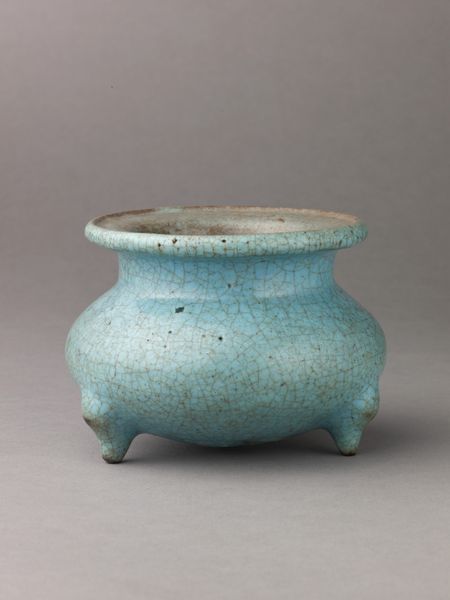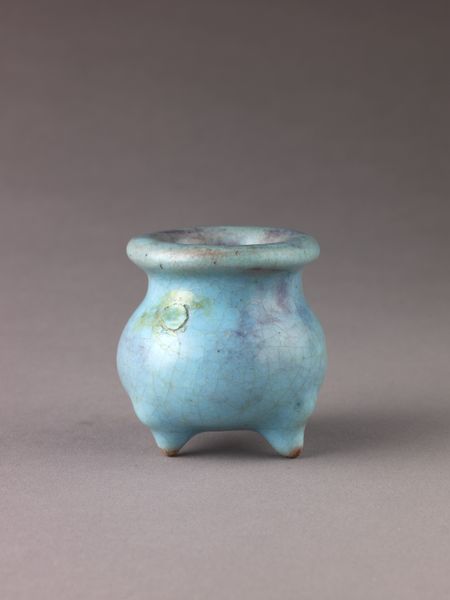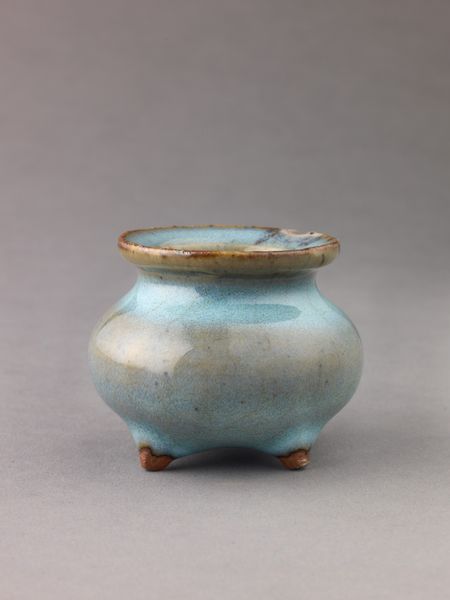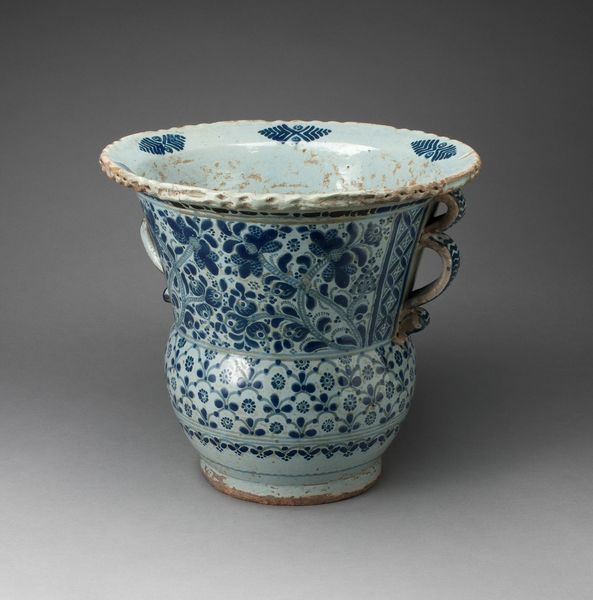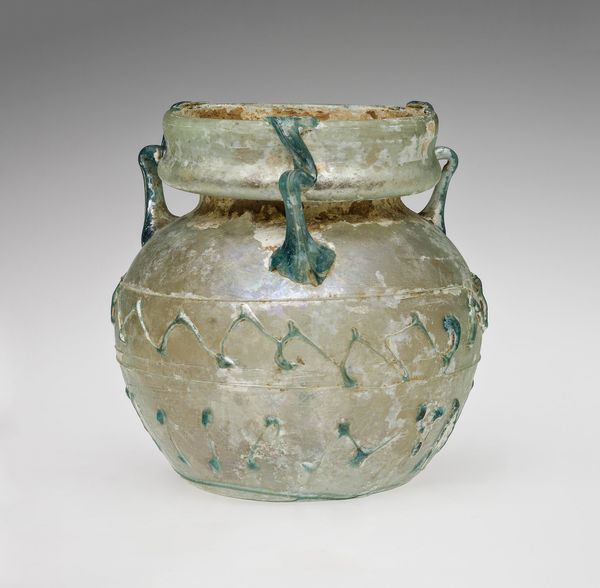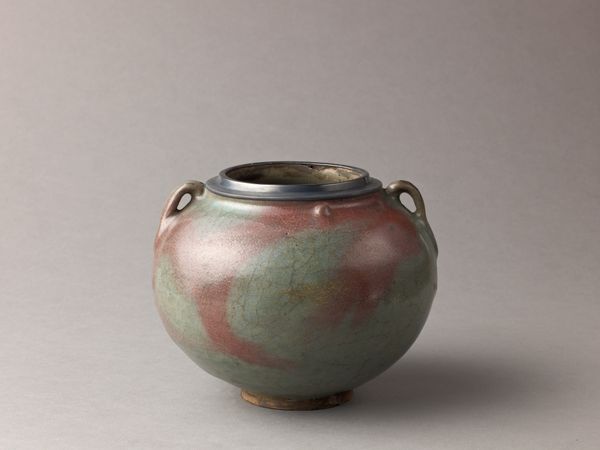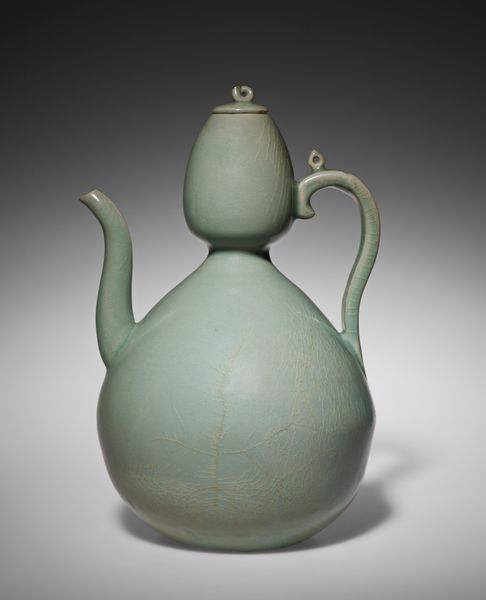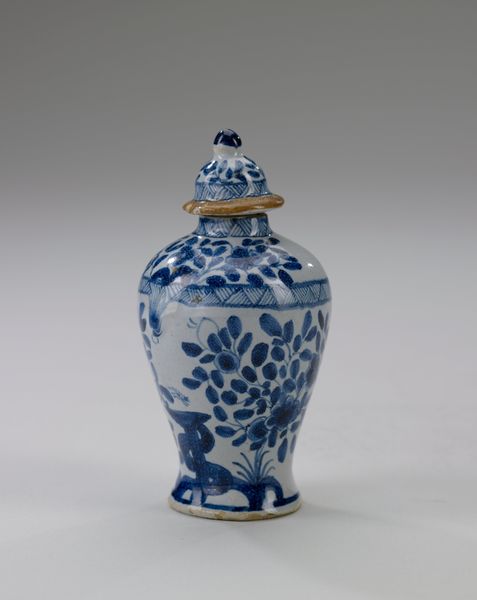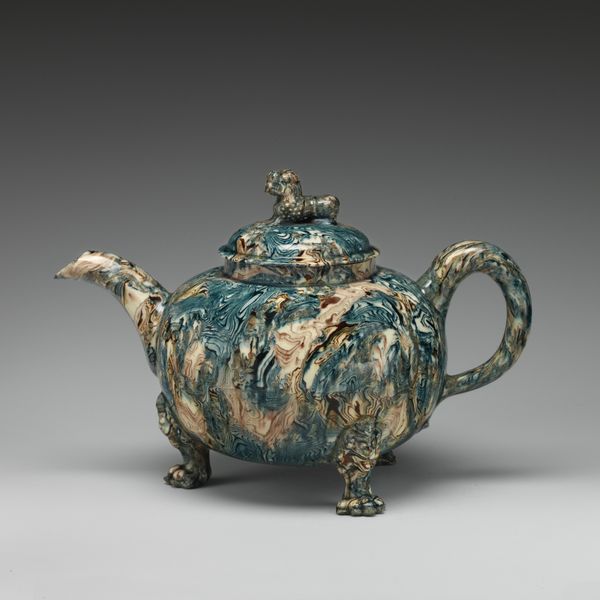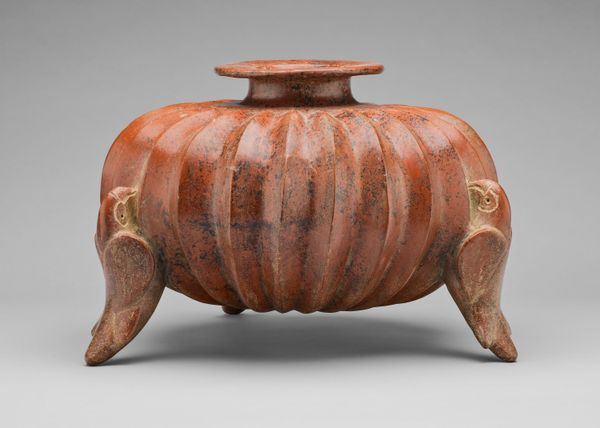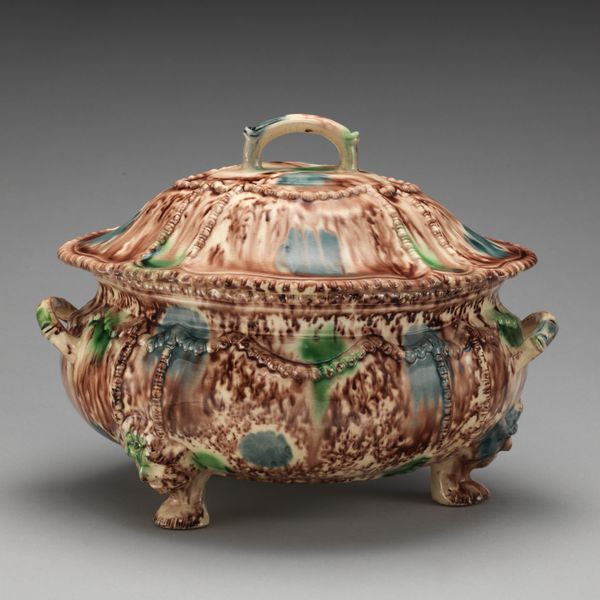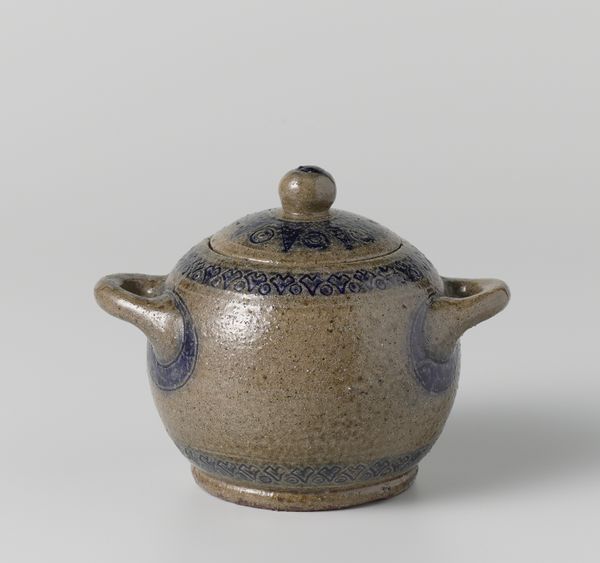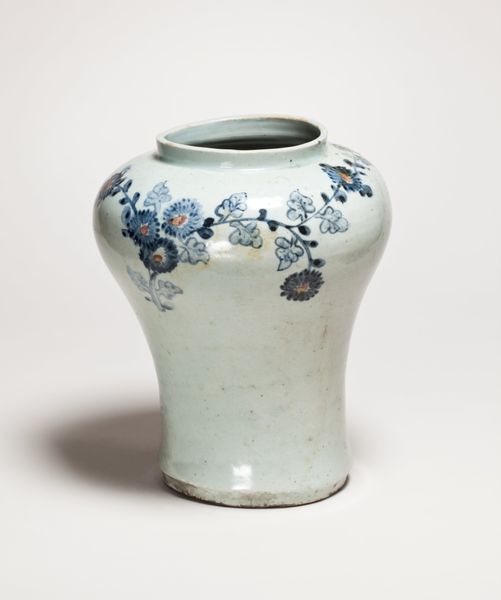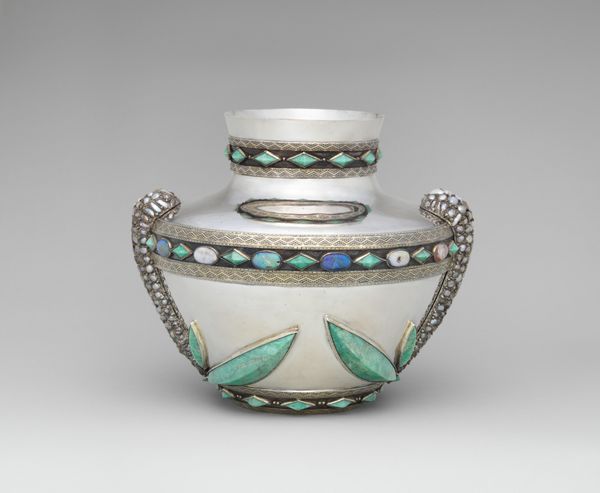
Scallop-shaped covered bowl with a leaf-shaped stand with dragon c. 1775 - 1799
0:00
0:00
anonymous
Rijksmuseum
Dimensions: height 12 cm, length 19.5 cm, width 14 cm
Copyright: Rijks Museum: Open Domain
Editor: This charming Scallop-shaped covered bowl, crafted around 1775-1799 by an anonymous artist, is made of earthenware and ceramic. I find the turquoise glaze really striking, and I'm curious about its unusual form. What can you tell me about how something like this might have been viewed at the time? Curator: Well, consider the period. Late 18th century Europe was consumed with Rococo, known for its opulent, theatrical, and asymmetrical designs, which reflected an aristocratic longing for fantasy and escapism. The popularity of Chinoiserie, imitations, or stylistic allusions to Chinese art, played into this, reflecting global trade and European fascination with the "Orient." The dragon motif here certainly nods towards that trend, wouldn't you say? How do you see the bowl fitting into that social context? Editor: Absolutely, the dragon details support the influence of Chinoiserie. This must have been an object for a wealthy household, displayed more for its beauty than its practicality, almost a statement piece? Curator: Precisely. The material itself, earthenware, would have been considered luxurious, and the artistry involved speaks to the patron's desire to flaunt their refinement and international taste. How do you see objects like these shaping European understanding, or perhaps *misunderstanding*, of other cultures? Editor: That's a great question. On the one hand, objects like this bowl reveal the desire for cultural exchange but, on the other, it's appropriation. And the inaccuracies inherent in Chinoiserie likely created skewed perspectives about Asian cultures among Europeans, don't you think? Curator: Indeed. It's fascinating how seemingly harmless decorative objects can be symptomatic of larger power dynamics. Examining these pieces invites us to critically engage with historical perceptions and legacies of cultural exchange. Editor: Thanks! I’ll certainly remember this next time I see some "exotic" artwork, keeping the broader cultural implications in mind.
Comments
No comments
Be the first to comment and join the conversation on the ultimate creative platform.
